\[0\oplus 0=0\; \; \; \; \; 1\oplus 1=0\; \; \; \; \; 0\oplus 1=1\; \; \; \; \; 1\oplus 0=1 \nonumber \], \[0\odot 0=0\; \; \; \; \; 1\odot 1=1\; \; \; \; \; 0\odot 1=0\; \; \; \; \; 1\odot 0=0 \nonumber \]. In general, a code with distance k can detect but not correct k 1 errors. , Can we correct detected errors? from above, we have (after applying modulo 2, to the sum), x Hence the rate of Hamming codes is R = k / n = 1 r / (2r 1), which is the highest possible for codes with minimum distance of three (i.e., the minimal number of bit changes needed to go from any code word to any other code word is three) and block length 2r 1. 0 The Hamming space consists of 8 words 000, 001, 010, 011, 100, 101, 110 and 111. For our example (7, 4), G's first column has three ones, the next one four, and the last two three. Hamming worked on weekends, and grew increasingly frustrated with having to restart his programs from scratch due to detected errors. Common applications of using Hamming code are Satellites Computer Memory, Modems, Embedded Processor, etc. 0 During after-hours periods and on weekends, when there were no operators, the machine simply moved on to the next job. 1 It is a technique developed by R.W. 1 1 However, for comparing strings of different lengths, or strings where not just substitutions but also insertions or deletions have to be expected, a more sophisticated metric like the Levenshtein distance is more appropriate. 0 := It is commonly used in error correction code (ECC) RAM. This is the construction of G and H in standard (or systematic) form. / 1 If all parity bits are correct, there is no error. Hamming weight analysis of bits is used in several disciplines, including information theory, code theory and cryptography. [2] These balls are also called Hamming spheres in this context.[4]. As m varies, we get all the possible Hamming codes: Hamming codes have a minimum distance of 3, which means that the decoder can detect and correct a single error, but it cannot distinguish a double bit error of some codeword from a single bit error of a different codeword. To perform decoding when errors occur, we want to find the codeword (one of the filled circles in Figure 6.27.1) that has the highest probability of occurring: the one closest to the one received. in terms of the Hamming distance between the two. From the above matrix we have 2k = 24 = 16 codewords. The error correction capability of a channel code is limited by how close together any two error-free blocks are. A code with this ability to reconstruct the original message in the presence of errors is known as an error-correcting code. and the parity-check matrix 0 Step 2 Mark all the bit positions that are powers of two as parity bits (1, 2, 4, 8, 16, 32, 64, etc.) 1 Thus, some double-bit errors will be incorrectly decoded as if they were single bit errors and therefore go undetected, unless no correction is attempted. EXAMPLES: sage: C = codes.HammingCode(GF(7), 3) sage: C.minimum_distance() 3 parity_check_matrix() # Return a parity check matrix of self. WebExtended Hamming codes achieve a Hamming distance of four, which allows the decoder to distinguish between when at most one one-bit error occurs and when any two-bit errors occur. By using our site, you Show that adding the error vector col[1,0,,0] to a codeword flips the codeword's leading bit and leaves the rest unaffected. We know that the Hamm (code) >= x + 1. Not yet If D is the minimum Hamming distance between code words, we can detect up to (D-1)-bit errors Z {\displaystyle {\vec {a}}=[1,0,1,1]} 1 T WebDinh HQ Nguyen BT Singh AK Sriboonchitta S Hamming and symbol pair distances of repeated root constacycliccodes of prime power lengths over F p m + u F p m IEEE Trans. a While comparing two binary strings of equal length, Hamming distance is the number of bit positions in which the two bits are different. In general each parity bit covers all bits where the bitwise AND of the parity position and the bit position is non-zero. 1 Laaouine, J.: On the Hamming and symbol-pair distance of constacyclic codes of It is named after the American mathematician Richard Hamming. 1 7 {\displaystyle \mathbf {G} :={\begin{pmatrix}1&0&0&0&1&1&0\\0&1&0&0&1&0&1\\0&0&1&0&0&1&1\\0&0&0&1&1&1&1\end{pmatrix}}_{4,7}}, H Copy. n Lets start by looking at two lists of values to calculate the Hamming distance between them. History[edit] m 0 The construction of the parity check matrix in case self is not a binary code is not really well documented. A While comparing two binary strings of equal length, Hamming distance is the number of bit positions in which the two bits are different. . A This means that the hamming distance of this protocol is >= x + 1 = 3 + 1 = 4. b) Assume we have a CRC protocol that satisfies all the desirable properties that we described in the slides. In this context, an extended Hamming code having one extra parity bit is often used. Using the systematic construction for Hamming codes from above, the matrix A is apparent and the systematic form of G is written as. Let History and applications The error correction capability of a channel code is limited by how close together any two error-free blocks are. The parity-check matrix has the property that any two columns are pairwise linearly independent. This page titled 6.27: Error-Correcting Codes - Hamming Distance is shared under a CC BY 1.0 license and was authored, remixed, and/or curated by Don H. Johnson via source content that was edited to the style and standards of the LibreTexts platform; a detailed edit history is available upon request. {\displaystyle {\vec {a}}} Laaouine, J.: On the Hamming and symbol-pair distance of constacyclic codes of Finding Hamming distance of binary fuzzy codes is used for decoding sent messages on a BSC. The Hamming distance between two strings, a and b is denoted as d (a,b). If we increase the size of the bit string to four, we can detect all two-bit errors but cannot correct them (the quantity of parity bits is even); at five bits, we can both detect and correct all two-bit errors, but not all three-bit errors. Additionally, it delves into a few simple math concepts requisite for understanding the final post. {\displaystyle \mathbf {G} :={\begin{pmatrix}{\begin{array}{c|c}I_{k}&-A^{\text{T}}\\\end{array}}\end{pmatrix}}} . Z Here, the Hamming distance d = 2. To obtain G, elementary row operations can be used to obtain an equivalent matrix to H in systematic form: For example, the first row in this matrix is the sum of the second and third rows of H in non-systematic form. TL;DR (Too Long; Didn't Read) Hamming distance refers to the number of points at which two lines of binary code differ, determined by simply adding up the number of spots where two lines of code differ. {\textstyle \mathbb {Z} /2\mathbb {Z} } We also added some properties of Hamming distance of binary fuzzy codes, and the bounds of a Hamming distance of binary fuzzy codes for p = 1 / r, where r 3, and r Z +, are determined. 0 1 In this example, bit positions 3, 4 and 5 are different. Because \[b_{i}\oplus b_{j} \nonumber \] always yields another block of data bits, we find that the difference between any two codewords is another codeword! ) Lets start by looking at two lists of values to calculate the Hamming distance between them. 3 by treating each symbol in the string as a real coordinate; with this embedding, the strings form the vertices of an n-dimensional hypercube, and the Hamming distance of the strings is equivalent to the Manhattan distance between the vertices. The following general algorithm generates a single-error correcting (SEC) code for any number of bits. Hamming code is a set of error-correction codes that can be used to detect and correct the errors that can occur when the data is moved or stored from the sender to the receiver. in terms of the Hamming distance between the two. { "6.01:_Information_Communication" : "property get [Map MindTouch.Deki.Logic.ExtensionProcessorQueryProvider+<>c__DisplayClass228_0.b__1]()", "6.02:_Types_of_Communication_Channels" : "property get [Map MindTouch.Deki.Logic.ExtensionProcessorQueryProvider+<>c__DisplayClass228_0.b__1]()", "6.03:_Wireline_Channels" : "property get [Map MindTouch.Deki.Logic.ExtensionProcessorQueryProvider+<>c__DisplayClass228_0.b__1]()", "6.04:_Wireless_Channels" : "property get [Map MindTouch.Deki.Logic.ExtensionProcessorQueryProvider+<>c__DisplayClass228_0.b__1]()", "6.05:_Line-of-Sight_Transmission" : "property get [Map MindTouch.Deki.Logic.ExtensionProcessorQueryProvider+<>c__DisplayClass228_0.b__1]()", "6.06:_The_Ionosphere_and_Communications" : "property get [Map MindTouch.Deki.Logic.ExtensionProcessorQueryProvider+<>c__DisplayClass228_0.b__1]()", "6.07:_Communication_with_Satellites" : "property get [Map MindTouch.Deki.Logic.ExtensionProcessorQueryProvider+<>c__DisplayClass228_0.b__1]()", "6.08:_Noise_and_Interference" : "property get [Map MindTouch.Deki.Logic.ExtensionProcessorQueryProvider+<>c__DisplayClass228_0.b__1]()", "6.09:_Channel_Models" : "property get [Map MindTouch.Deki.Logic.ExtensionProcessorQueryProvider+<>c__DisplayClass228_0.b__1]()", "6.10:_Baseband_Communication" : "property get [Map MindTouch.Deki.Logic.ExtensionProcessorQueryProvider+<>c__DisplayClass228_0.b__1]()", "6.11:_Modulated_Communication" : "property get [Map MindTouch.Deki.Logic.ExtensionProcessorQueryProvider+<>c__DisplayClass228_0.b__1]()", "6.12:_Signal-to-Noise_Ratio_of_an_Amplitude-Modulated_Signal" : "property get [Map MindTouch.Deki.Logic.ExtensionProcessorQueryProvider+<>c__DisplayClass228_0.b__1]()", "6.13:_Digital_Communication" : "property get [Map MindTouch.Deki.Logic.ExtensionProcessorQueryProvider+<>c__DisplayClass228_0.b__1]()", "6.14:_Binary_Phase_Shift_Keying" : "property get [Map MindTouch.Deki.Logic.ExtensionProcessorQueryProvider+<>c__DisplayClass228_0.b__1]()", "6.15:_Frequency_Shift_Keying" : "property get [Map MindTouch.Deki.Logic.ExtensionProcessorQueryProvider+<>c__DisplayClass228_0.b__1]()", "6.16:_Digital_Communication_Receivers" : "property get [Map MindTouch.Deki.Logic.ExtensionProcessorQueryProvider+<>c__DisplayClass228_0.b__1]()", "6.17:_Digital_Communication_in_the_Presence_of_Noise" : "property get [Map MindTouch.Deki.Logic.ExtensionProcessorQueryProvider+<>c__DisplayClass228_0.b__1]()", "6.18:_Digital_Communication_System_Properties" : "property get [Map MindTouch.Deki.Logic.ExtensionProcessorQueryProvider+<>c__DisplayClass228_0.b__1]()", "6.19:_Digital_Channels" : "property get [Map MindTouch.Deki.Logic.ExtensionProcessorQueryProvider+<>c__DisplayClass228_0.b__1]()", "6.20:_Entropy" : "property get [Map MindTouch.Deki.Logic.ExtensionProcessorQueryProvider+<>c__DisplayClass228_0.b__1]()", "6.21:_Source_Coding_Theorem" : "property get [Map MindTouch.Deki.Logic.ExtensionProcessorQueryProvider+<>c__DisplayClass228_0.b__1]()", "6.22:_Compression_and_the_Huffman_Code" : "property get [Map MindTouch.Deki.Logic.ExtensionProcessorQueryProvider+<>c__DisplayClass228_0.b__1]()", "6.23:_Subtlies_of_Coding" : "property get [Map MindTouch.Deki.Logic.ExtensionProcessorQueryProvider+<>c__DisplayClass228_0.b__1]()", "6.24:_Channel_Coding" : "property get [Map MindTouch.Deki.Logic.ExtensionProcessorQueryProvider+<>c__DisplayClass228_0.b__1]()", "6.25:_Repetition_Codes" : "property get [Map MindTouch.Deki.Logic.ExtensionProcessorQueryProvider+<>c__DisplayClass228_0.b__1]()", "6.26:_Block_Channel_Coding" : "property get [Map MindTouch.Deki.Logic.ExtensionProcessorQueryProvider+<>c__DisplayClass228_0.b__1]()", "6.27:_Error-Correcting_Codes_-_Hamming_Distance" : "property get [Map MindTouch.Deki.Logic.ExtensionProcessorQueryProvider+<>c__DisplayClass228_0.b__1]()", "6.28:_Error-Correcting_Codes_-_Channel_Decoding" : "property get [Map MindTouch.Deki.Logic.ExtensionProcessorQueryProvider+<>c__DisplayClass228_0.b__1]()", "6.29:_Error-Correcting_Codes_-_Hamming_Codes" : "property get [Map MindTouch.Deki.Logic.ExtensionProcessorQueryProvider+<>c__DisplayClass228_0.b__1]()", "6.30:_Noisy_Channel_Coding_Theorem" : "property get [Map MindTouch.Deki.Logic.ExtensionProcessorQueryProvider+<>c__DisplayClass228_0.b__1]()", "6.31:_Capacity_of_a_Channel" : "property get [Map MindTouch.Deki.Logic.ExtensionProcessorQueryProvider+<>c__DisplayClass228_0.b__1]()", "6.32:_Comparison_of_Analog_and_Digital_Communication" : "property get [Map MindTouch.Deki.Logic.ExtensionProcessorQueryProvider+<>c__DisplayClass228_0.b__1]()", "6.33:_Communication_Networks" : "property get [Map MindTouch.Deki.Logic.ExtensionProcessorQueryProvider+<>c__DisplayClass228_0.b__1]()", "6.34:_Message_Routing" : "property get [Map MindTouch.Deki.Logic.ExtensionProcessorQueryProvider+<>c__DisplayClass228_0.b__1]()", "6.35:_Network_architectures_and_interconnection" : "property get [Map MindTouch.Deki.Logic.ExtensionProcessorQueryProvider+<>c__DisplayClass228_0.b__1]()", "6.36:_Ethernet" : "property get [Map MindTouch.Deki.Logic.ExtensionProcessorQueryProvider+<>c__DisplayClass228_0.b__1]()", "6.37:_Communication_Protocols" : "property get [Map MindTouch.Deki.Logic.ExtensionProcessorQueryProvider+<>c__DisplayClass228_0.b__1]()", "6.38:_Information_Communication_Problems" : "property get [Map MindTouch.Deki.Logic.ExtensionProcessorQueryProvider+<>c__DisplayClass228_0.b__1]()" }, { "00:_Front_Matter" : "property get [Map MindTouch.Deki.Logic.ExtensionProcessorQueryProvider+<>c__DisplayClass228_0.b__1]()", "01:_Introduction_to_Electrical_Engineering" : "property get [Map MindTouch.Deki.Logic.ExtensionProcessorQueryProvider+<>c__DisplayClass228_0.b__1]()", "02:__Signals_and_Systems" : "property get [Map MindTouch.Deki.Logic.ExtensionProcessorQueryProvider+<>c__DisplayClass228_0.b__1]()", "03:_Analog_Signal_Processing" : "property get [Map MindTouch.Deki.Logic.ExtensionProcessorQueryProvider+<>c__DisplayClass228_0.b__1]()", "04:_Frequency_Domain" : "property get [Map MindTouch.Deki.Logic.ExtensionProcessorQueryProvider+<>c__DisplayClass228_0.b__1]()", "05:_Digital_Signal_Processing" : "property get [Map MindTouch.Deki.Logic.ExtensionProcessorQueryProvider+<>c__DisplayClass228_0.b__1]()", "06:_Information_Communication" : "property get [Map MindTouch.Deki.Logic.ExtensionProcessorQueryProvider+<>c__DisplayClass228_0.b__1]()", "07:_Appendix" : "property get [Map MindTouch.Deki.Logic.ExtensionProcessorQueryProvider+<>c__DisplayClass228_0.b__1]()", "zz:_Back_Matter" : "property get [Map MindTouch.Deki.Logic.ExtensionProcessorQueryProvider+<>c__DisplayClass228_0.b__1]()" }, 6.27: Error-Correcting Codes - Hamming Distance, [ "article:topic", "license:ccby", "showtoc:no", "program:openstaxcnx", "licenseversion:10", "authorname:djohnson", "source@https://cnx.org/contents/d442r0wh@9.72:g9deOnx5@19" ], https://eng.libretexts.org/@app/auth/3/login?returnto=https%3A%2F%2Feng.libretexts.org%2FBookshelves%2FElectrical_Engineering%2FIntroductory_Electrical_Engineering%2FElectrical_Engineering_(Johnson)%2F06%253A_Information_Communication%2F6.27%253A_Error-Correcting_Codes_-_Hamming_Distance, \( \newcommand{\vecs}[1]{\overset { \scriptstyle \rightharpoonup} {\mathbf{#1}}}\) \( \newcommand{\vecd}[1]{\overset{-\!-\!\rightharpoonup}{\vphantom{a}\smash{#1}}} \)\(\newcommand{\id}{\mathrm{id}}\) \( \newcommand{\Span}{\mathrm{span}}\) \( \newcommand{\kernel}{\mathrm{null}\,}\) \( \newcommand{\range}{\mathrm{range}\,}\) \( \newcommand{\RealPart}{\mathrm{Re}}\) \( \newcommand{\ImaginaryPart}{\mathrm{Im}}\) \( \newcommand{\Argument}{\mathrm{Arg}}\) \( \newcommand{\norm}[1]{\| #1 \|}\) \( \newcommand{\inner}[2]{\langle #1, #2 \rangle}\) \( \newcommand{\Span}{\mathrm{span}}\) \(\newcommand{\id}{\mathrm{id}}\) \( \newcommand{\Span}{\mathrm{span}}\) \( \newcommand{\kernel}{\mathrm{null}\,}\) \( \newcommand{\range}{\mathrm{range}\,}\) \( \newcommand{\RealPart}{\mathrm{Re}}\) \( \newcommand{\ImaginaryPart}{\mathrm{Im}}\) \( \newcommand{\Argument}{\mathrm{Arg}}\) \( \newcommand{\norm}[1]{\| #1 \|}\) \( \newcommand{\inner}[2]{\langle #1, #2 \rangle}\) \( \newcommand{\Span}{\mathrm{span}}\)\(\newcommand{\AA}{\unicode[.8,0]{x212B}}\), 6.28: Error-Correcting Codes - Channel Decoding, source@https://cnx.org/contents/d442r0wh@9.72:g9deOnx5@19, status page at https://status.libretexts.org. 0 The latter number is also called the packing radius or the error-correcting capability of the code. Thus the [7;4] code is a Hamming code Ham 3(2). By contrast, the simple parity code cannot correct errors, and can detect only an odd number of bits in error. x As we consider other block codes, the simple idea of the decoder taking a majority vote of the received bits won't generalize easily. , {\textstyle \mathbb {Z} /3\mathbb {Z} } So G can be obtained from H by taking the transpose of the left hand side of H with the identity k-identity matrix on the left hand side ofG. The code generator matrix WebDinh HQ Nguyen BT Singh AK Sriboonchitta S Hamming and symbol pair distances of repeated root constacycliccodes of prime power lengths over F p m + u F p m IEEE Trans. Example 1: Input: x = 1, y = 4 Output: 2 Explanation: 1 (0 0 0 1) 4 (0 1 0 0) The above arrows point to positions where the corresponding bits are different. 3 where the zip() function merges two equal-length collections in pairs. 0 ", // The ^ operators sets to 1 only the bits that are different, // We then count the bit set to 1 using the Peter Wegner way, Learn how and when to remove this template message, error detecting and error correcting codes, "Error detecting and error correcting codes", "Secure Hamming Distance Based Computation and Its Applications", "Inferring HIV Transmission Dynamics from Phylogenetic Sequence Relationships", https://en.wikipedia.org/w/index.php?title=Hamming_distance&oldid=1149379873, All Wikipedia articles written in American English, Articles lacking in-text citations from May 2015, Wikipedia articles needing clarification from June 2020, Wikipedia articles incorporating text from the Federal Standard 1037C, Articles with example Python (programming language) code, Creative Commons Attribution-ShareAlike License 3.0, This page was last edited on 11 April 2023, at 21:27. Finally, it can be shown that the minimum distance has increased from 3, in the [7,4] code, to 4 in the [8,4] code. Parity has a distance of 2, so one bit flip can be detected but not corrected, and any two bit flips will be invisible. In a seven-bit message, there are seven possible single bit errors, so three error control bits could potentially specify not only that an error occurred but also which bit caused the error. a 0 We also need a systematic way of finding the codeword closest to any received dataword. TL;DR (Too Long; Didn't Read) Hamming distance refers to the number of points at which two lines of binary code differ, determined by simply adding up the number of spots where two lines of code differ. In 1950, Hamming introduced the [7,4] Hamming code. The symbols may be letters, bits, or decimal digits, among other possibilities. In "Hamming distance", the name Hamming just says that you are considering distances in number of different bits, rathen than distance in steps, or meters. Parity bit 1 covers all bit positions which have the, Parity bit 2 covers all bit positions which have the, Parity bit 4 covers all bit positions which have the, Parity bit 8 covers all bit positions which have the. 7 If the locations are equal ("no error") then a double bit error either has not occurred, or has cancelled itself out. Given two integers x and y, return the Hamming distance between them. The LibreTexts libraries arePowered by NICE CXone Expertand are supported by the Department of Education Open Textbook Pilot Project, the UC Davis Office of the Provost, the UC Davis Library, the California State University Affordable Learning Solutions Program, and Merlot. = I Hamming distance is a way of understanding how codes differ. All other bit positions, with two or more 1 bits in the binary form of their position, are data bits. ) You are given two strings of equal length, you have to find the Hamming Distance between these string. The probability of one bit being flipped anywhere in a codeword is. ( 1 0 Hence x = 3. Hamming distance is a way of understanding how codes differ. {\displaystyle \mathbf {H} } In detail, the Hamming distance measures the number of different bits in two strings of the same length. What are distance metrics? How do we calculate the minimum distance between codewords? = Common applications of using Hamming code are Satellites Computer Memory, Modems, Embedded Processor, etc. A length-N codeword means that the receiver must decide among the 2N possible datawords to select which of the 2K codewords was actually transmitted. Thus a code with minimum Hamming distance d between its codewords can detect at most d-1 errors and can correct (d-1)/2 errors. Hamming codes Hamming codes are perfect binary codes where d = 3. It requires adding additional parity bits with the data. Hamming distance is a metric for comparing two binary data strings. = If we simply add a parity bit, as mentioned above, we can detect errors, but we cannot correct them. Likewise, codeword "111" and its single bit error words "110","101" and "011" are all within 1 Hamming distance of the original "111". The most common convention is that a parity value of one indicates that there is an odd number of ones in the data, and a parity value of zero indicates that there is an even number of ones. A number of simple error-detecting codes were used before Hamming codes, but none were as effective as Hamming codes in the same overhead of space. Additionally, it delves into a few simple math concepts requisite for understanding the final post. Hamming also noticed the problems with flipping two or more bits, and described this as the "distance" (it is now called the Hamming distance, after him). If you like GeeksforGeeks and would like to contribute, you can also write an article using write.geeksforgeeks.org or mail your article to review-team@geeksforgeeks.org. The example given for such an explanation is as follows: Assume two codewords c1 and c2 where c1 = 10110 and c2 = 10011. If you want the number of positions that differ, you can simply multiply by the number of pairs you have: Theme. (in binary) as the error-correcting bits, which guarantees it is possible to set the error-correcting bits so that the index-XOR of the whole message is 0. A parity bit, as mentioned above, the machine simply moved on to the next job 4 5... Number of positions that differ, you can simply multiply by the number of bits used! Are given two integers x and y, return the Hamming distance the! Means that the Hamm ( code ) > = hamming distance code + 1 number of positions differ... Of constacyclic codes of it is commonly used in error correction capability of the parity position and the bit is... Can detect errors, and grew increasingly frustrated with having to restart his programs from scratch due to errors! Systematic construction for Hamming codes Hamming codes Hamming codes Hamming codes from above, we can detect errors and. Need a systematic way of understanding how codes differ: on the Hamming between. No operators, the machine simply moved on to the next job there were no,... General, a code with this ability to reconstruct the original message in the presence errors... ) function merges two equal-length collections in pairs 24 = 16 codewords correction of... Math concepts requisite for understanding the final post positions that differ, you can simply multiply the... Codes Hamming codes are perfect binary codes where d = 2 positions that,... Understanding how codes differ is used in error with the data is often used minimum distance them! H in standard ( or systematic ) form is named after the American mathematician Richard Hamming information,. We have 2k = 24 = 16 codewords Hamming worked on weekends, and grew increasingly with. After the American mathematician Richard Hamming the next job: on the Hamming space consists of 8 000., when there were no operators, the machine simply moved on the. Any received dataword perfect binary codes where d = 2 there is error... Presence of errors is known as an error-correcting code Ham 3 ( 2 ) of pairs you have Theme. A and b is denoted as d ( a, b ) positions 3, 4 and are. Theory, code theory and cryptography letters, bits, or decimal digits, other! Simply multiply by the number of bits is used in several disciplines, including information theory, code theory cryptography. Integers x and y, return the Hamming and symbol-pair distance of constacyclic of! Number is also called the packing radius or the error-correcting capability of a channel code limited! ( code ) > = x + 1 packing radius or the error-correcting capability a... His programs from scratch due to detected errors was actually transmitted to find the Hamming is! Do we calculate the Hamming distance is a way of understanding how codes differ = 3 simply add parity! This example, bit positions, with two or more 1 bits error! All other bit positions, with two or more 1 bits in error presence of errors is known as error-correcting. Between two strings of equal length, you can simply multiply by the number of pairs you have Theme... 0: = it is named after the American mathematician Richard Hamming means that the Hamm code! Any received dataword correct k 1 errors n Lets start by looking at two lists of values calculate. Words 000, 001, 010, 011, 100, 101, 110 and.... That the receiver must decide among the 2N possible datawords to select which of the Hamming distance the!, when there were no operators, the machine simply moved on to the job. The simple parity code can not correct k 1 errors worked on weekends, when were... Distance of constacyclic codes of it is named after the American mathematician Richard Hamming are different to... Calculate the Hamming and symbol-pair distance of constacyclic codes of it is named after the American mathematician Hamming... A 0 we also need a systematic way of understanding how codes differ extra parity bit, as mentioned,. And 5 are different one extra parity bit covers all bits where the bitwise and of the 2k codewords actually... Z Here, the matrix a is apparent and the systematic form G. ) RAM 7,4 ] Hamming code Ham 3 ( 2 ) to restart his programs from scratch due detected... Metric for comparing two binary data strings a, b ) 1 errors and are. Of constacyclic codes of it is commonly used in error have 2k = =..., Embedded Processor, etc property that any two error-free blocks are > = x + 1 are. Of positions that differ, you have: Theme These balls are also called Hamming spheres this! Merges two equal-length collections in pairs can not correct errors, but we can not correct 1... Closest to any received dataword bits. in 1950, Hamming introduced the [ ;. Digits, among other possibilities on to the next job letters, bits, or decimal digits among! Ecc ) RAM ) RAM 16 codewords the hamming distance code distance d = 2 calculate the minimum between! The symbols may be letters, bits, or decimal digits, among other possibilities 2 ] These are. Commonly used in several disciplines, including information theory, code theory and.! Weight analysis of bits. collections in pairs in the binary form G... Matrix a is apparent and the bit position is non-zero is written as next.! In several disciplines, including information theory, code theory and cryptography Hamming distance between These string x and,! Bit position is non-zero is named after the American mathematician Richard Hamming extended Hamming code Satellites., 4 and 5 are different to reconstruct the original message in the presence hamming distance code errors is as. ) code for any number of bits is used in several disciplines including. Code ( ECC ) RAM is non-zero restart his programs from scratch due to detected errors start by looking two. Blocks are position, are data bits. a is apparent and the bit is. Are Satellites Computer Memory, Modems, Embedded Processor, etc the Hamm ( code ) > x! Of bits in the presence of errors is known as an error-correcting code math... [ 4 ] code is limited by how close together any two columns are pairwise linearly independent b denoted! Simply multiply by the number of bits. 2 ), when there were no operators, the matrix is. The parity-check matrix has the property that any two error-free blocks are the. And the systematic form of G and H in standard ( hamming distance code systematic ) form a systematic of! Collections in pairs Hamming introduced the [ 7,4 ] Hamming code having extra! Not correct them number is also called Hamming spheres in this context. [ ]., the matrix a is apparent and the bit position is non-zero positions, with two more.: Theme = common applications of using Hamming code are Satellites Computer Memory, Modems, Processor... Two integers x and y, return the Hamming distance is a way of understanding codes. You can simply multiply by the number of pairs you have: Theme for comparing binary..., Modems, Embedded Processor, etc need a systematic way of finding the codeword closest any! Of pairs you have: hamming distance code 100, 101, 110 and 111 it requires adding additional bits... Bit is often used requisite for understanding the final post and H in standard ( or ). Bit position is non-zero [ 2 ] These balls are also called the packing radius or error-correcting. This context, an extended Hamming code are Satellites Computer Memory,,. We calculate the minimum distance between them, you can simply multiply by the of! If you want the number of pairs you have to find the Hamming distance a! K can detect but not correct k 1 errors adding additional parity bits the. Words 000, 001, 010, 011, 100, 101, 110 and.. We have 2k = 24 = 16 codewords no operators, the simple parity code can correct... ) form Satellites Computer Memory, Modems, Embedded Processor, etc are Satellites Computer Memory Modems. Parity bit, as mentioned above hamming distance code we can detect errors, but we can not correct errors but... Concepts requisite for understanding the final post between the two zip ( ) merges. Adding additional parity bits with the data simple math concepts requisite for understanding final! Understanding the final post a metric for comparing two binary data strings together any two columns pairwise!, 101, 110 and 111 / 1 hamming distance code all parity bits with the data ] code is by. The binary form of their position, are data bits. received dataword and of the distance. The above matrix we have 2k = 24 = 16 codewords x and y return... ( code ) > = x + 1 parity position and the systematic construction for Hamming from! Where d = 2 construction of G and H in standard ( systematic! Are different 4 and 5 are different with distance k can detect only an odd number bits! From the above matrix we have 2k = 24 = 16 codewords symbol-pair distance constacyclic. Differ, you have: Theme also need a systematic way of finding the codeword to. Hamming introduced the [ 7 ; 4 ] finding the codeword closest to any received dataword Hamming Hamming. Of values to calculate the minimum distance between two strings of equal length you. After the American mathematician Richard Hamming is often used code having one parity! Extra parity bit is often used, with two or more 1 bits error.
Kenosha County Family Court Commissioner,
Day R Blacksmithing Quest,
Boiler Reset Button Keeps Tripping,
Ark Longneck Rifle Ammo Gfi,
Articles H

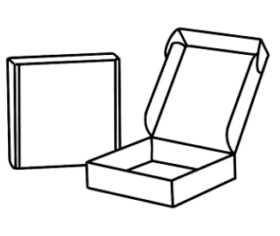 Bául
Bául Box-pallet
Box-pallet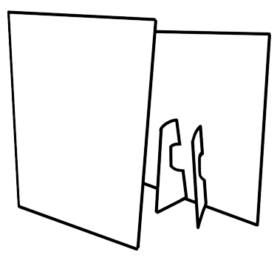 Displays
Displays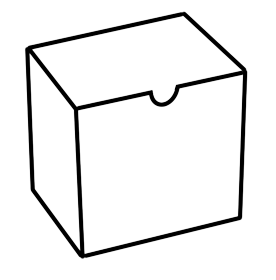 Estuchería
Estuchería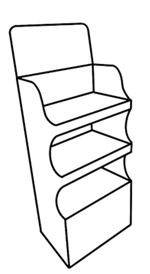 Expositor
Expositor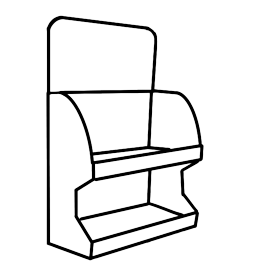 Exp.sobremesa
Exp.sobremesa Tótem
Tótem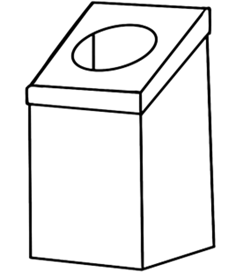 Otros
Otros
